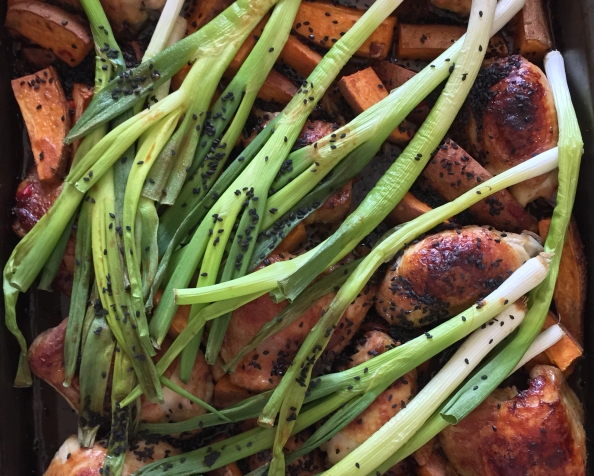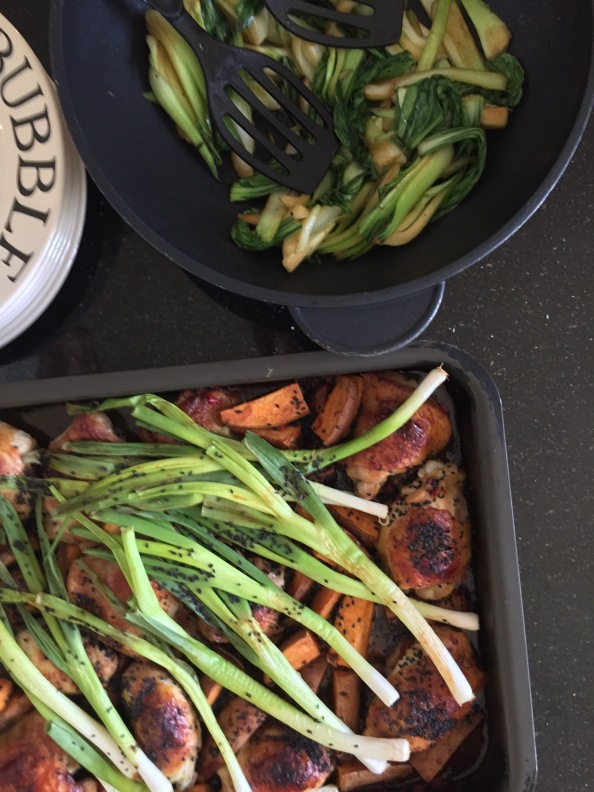I’m calling these “Scandinavian” because I consulted my Norwegian grandmother’s recipe for the meatballs themselves and stole elements of a Diana Henry recipe for Swedish meatballs (in her book “Roast Figs Sugar Snow”) to make the sauce.
Surprisingly, even though my mother gave me her mother’s meatball recipe years ago, I had never used it before. I make meatballs a lot, but usually Italian-style ones in a tomato sauce to serve with spaghetti. It’s good to have a change and these, dare I say it, are just as good or possibly better. If Italian flavours are what you’re after it’s simpler just to make a ragù.
The addition of baking powder to my grandmother’s meatballs is a revelation: it makes them wonderfully light and airy. You can serve these with lingonberry sauce or jam. My son bought me some at SkandiKitchen in London. Ikea sells it too, but if you haven’t got any, cranberry sauce would also go well. I served them with braised, spiced red cabbage and plain boiled potatoes, which struck me as being very Norwegian. I’d like to think my grandmother would approve and that she’d be pleased I served them on her Porsgrund china plates. 
Scandinavian Meatballs
Ingredients
Meatballs:
- 500g pork mince
- 500g beef mince
- 1 heaped tsp salt
- 1 heaped tsp baking powder
- 1 heaped tsp ground white pepper
- 1 heaped tsp ground ginger
- 100g breadcrumbs, soaked for about 30 minutes in 150ml milk until all the milk has been absorbed
- About 1 tbsp sunflower or groundnut oil
Sauce:
- 400ml chicken or beef stock
- 20g butter
- 1 tbsp sunflower or groundnut oil
- 1 tbsp plain flour
- 200g sour cream
- 3 tbsps chopped fresh dill
Method
- Mix all the ingredients for the meatballs thoroughly in a large bowl. You could do this in a food processor
- Using wet hands form the mixture into balls. I’ll leave the size to you
- Fry in a little oil until brown. I “fried” them, drizzled with oil, on the large Aga baking tray for five minutes on the floor of the roasting oven before turning them over and frying for a further five minutes or until they were nicely browned. Doing it in the oven like this stops the Aga losing heat and means you don’t get fat splashing over the Aga top
- Heat the butter with 1 tbsp oil in a large saucepan or sauté pan on the simmering plate. Add the flour and cook, stirring until the flour is golden
- Take the pan off the heat and gradually add the stock, stirring well after each addition
- Put the pan back on the simmering plate and bring the liquid up to the boil, stirring constantly
- Add the sour cream and then the meatballs
- Cover and place in the simmering oven for at least 30 minutes (but as you know, they will be fine if left there for much longer than that) until the meatballs are cooked through. (If you are short of time you could cook them for about 15 minutes in the baking oven.)
- Taste for seasoning, add the chopped dill and serve







 collection of menus rather than recipes; it’s also a sort of memoir, an account of the places she’s travelled to since she was a teenager, and where she discovered all the dishes she loves to cook and eat. I have already cooked a few of the recipes from the book, although I haven’t yet put together a whole menu. The first thing I made was this braised pork, which I pounced on because I knew it would be perfect for the
collection of menus rather than recipes; it’s also a sort of memoir, an account of the places she’s travelled to since she was a teenager, and where she discovered all the dishes she loves to cook and eat. I have already cooked a few of the recipes from the book, although I haven’t yet put together a whole menu. The first thing I made was this braised pork, which I pounced on because I knew it would be perfect for the 
















